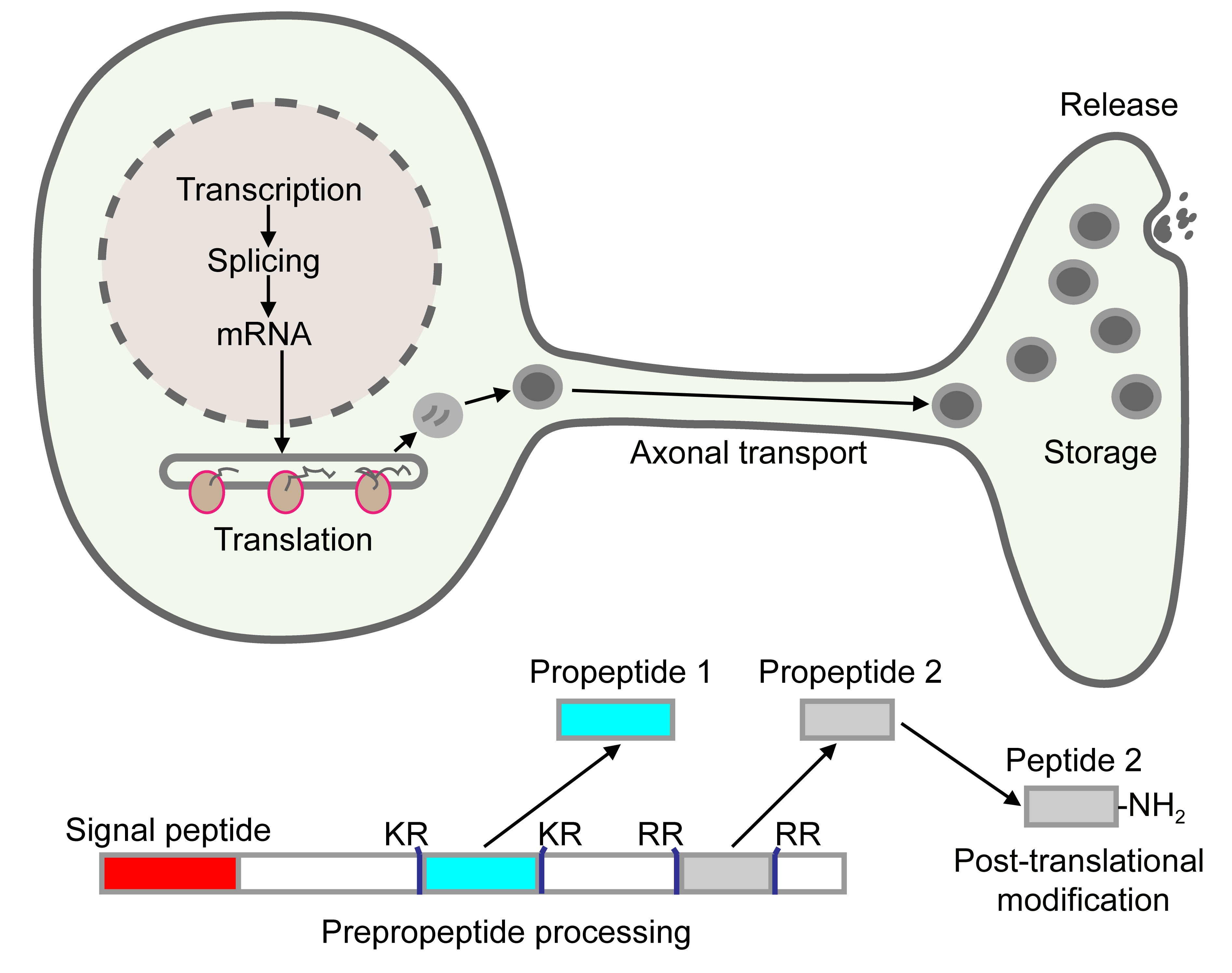


| Neuropeptide | Abbreviation | Synonyms | More Information |
|---|
Jiang, H., Kim, H. G., & Park, Y., 2015. Alternatively spliced orcokinin isoforms and their functions in Tribolium castaneum. Insect Biochemistry and Molecular Biology. 65, 1–9.
Mizoguchi, A., Okamoto, N., 2013. Insulin-like and IGF-like peptides in the silkmoth Bombyx mori: discovery, structure, secretion, and function. Frontiers in Physiology. 4, 217.
Nässel, D. R., Larhammar, D (2013) Neuropeptides and peptide hormones. In: Galizia, C.G and Lledo, P.M (Eds) Neurosciences - From Molecule to Behavior: a university textbook. Springer, Berlin, pp 213-237.
Nässel, D.R., Winther, Å.M., 2010. Drosophila neuropeptides in regulation of physiology and behavior. Progress in Neurobiology. 92, 42–104.
Stafflinger, E., Hansen, K. K., Hauser, F., Schneider, M., Cazzamali, G., Williamson, M., & Grimmelikhuijzen, C. J. P., 2008. Cloning and identification of an oxytocin/vasopressin-like receptor and its ligand from insects. Proceedings of the National Academy of Sciences of the United States of America, 105(9), 3262–7.